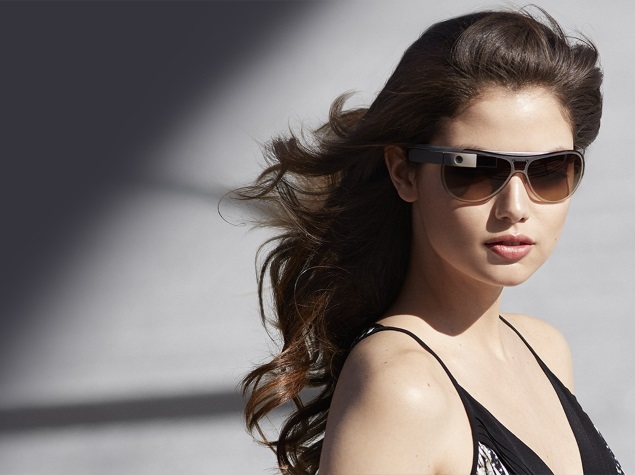- Home
- Wearables
- Wearables News
- Google Glass May Obstruct Peripheral Vision: Study
Google Glass May Obstruct Peripheral Vision: Study

Only three people were included in the analysis of the technology which provides online access via a tiny screen attached to a spectacle frame published in the Journal of the American Medical Association.
The findings showed "significant" obstruction in peripheral vision on the right side, where the device is mounted, the article said.
Researchers said further study in a larger pool of wearers is needed.
"To our knowledge, this is the first evaluation of the effect of wearable electronics with head-mounted display on vision," wrote the team of investigators at the University of California, San Francisco.
"The device created a clinically meaningful visual field obstruction in the upper right quadrant."
The blockage was due to the thick strip of material along the right side of the wearable device, not due to any distraction by the software, the scientists said.
Three men were part of the study. All had 20/20 vision.
Visual tests, as well as an analysis of 132 images on the Internet of Google Glass being worn by consumers, showed that the gear lined up with people's eyes in such a way that it obstructed their field of view.
In the study, wearers took visual tests with the Google Glass in place, and then again wearing conventional eyeglass frames.
"Conventional spectacle frames can reduce visual field, sometimes causing absolute blind spots, and head mounted devices have even more pronounced frames," the article said.
Google Glass became available in the US in May for a price of $1,500.
Get your daily dose of tech news, reviews, and insights, in under 80 characters on Gadgets 360 Turbo. Connect with fellow tech lovers on our Forum. Follow us on X, Facebook, WhatsApp, Threads and Google News for instant updates. Catch all the action on our YouTube channel.
Related Stories
- Samsung Galaxy Unpacked 2025
- ChatGPT
- Redmi Note 14 Pro+
- iPhone 16
- Apple Vision Pro
- Oneplus 12
- OnePlus Nord CE 3 Lite 5G
- iPhone 13
- Xiaomi 14 Pro
- Oppo Find N3
- Tecno Spark Go (2023)
- Realme V30
- Best Phones Under 25000
- Samsung Galaxy S24 Series
- Cryptocurrency
- iQoo 12
- Samsung Galaxy S24 Ultra
- Giottus
- Samsung Galaxy Z Flip 5
- Apple 'Scary Fast'
- Housefull 5
- GoPro Hero 12 Black Review
- Invincible Season 2
- JioGlass
- HD Ready TV
- Laptop Under 50000
- Smartwatch Under 10000
- Latest Mobile Phones
- Compare Phones
- OnePlus 15R
- Realme Narzo 90x 5G
- Realme Narzo 90 5G
- Vivo S50 Pro Mini
- Vivo S50
- OPPO Reno 15c
- Redmi Note 15 5G
- Redmi Note 15 Pro 5G
- Asus ProArt P16
- MacBook Pro 14-inch (M5, 2025)
- Infinix Xpad Edge
- OnePlus Pad Go 2
- OnePlus Watch Lite
- Just Corseca Skywatch Pro
- Acerpure Nitro Z Series 100-inch QLED TV
- Samsung 43 Inch LED Ultra HD (4K) Smart TV (UA43UE81AFULXL)
- Asus ROG Ally
- Nintendo Switch Lite
- Haier 1.6 Ton 5 Star Inverter Split AC (HSU19G-MZAID5BN-INV)
- Haier 1.6 Ton 5 Star Inverter Split AC (HSU19G-MZAIM5BN-INV)















